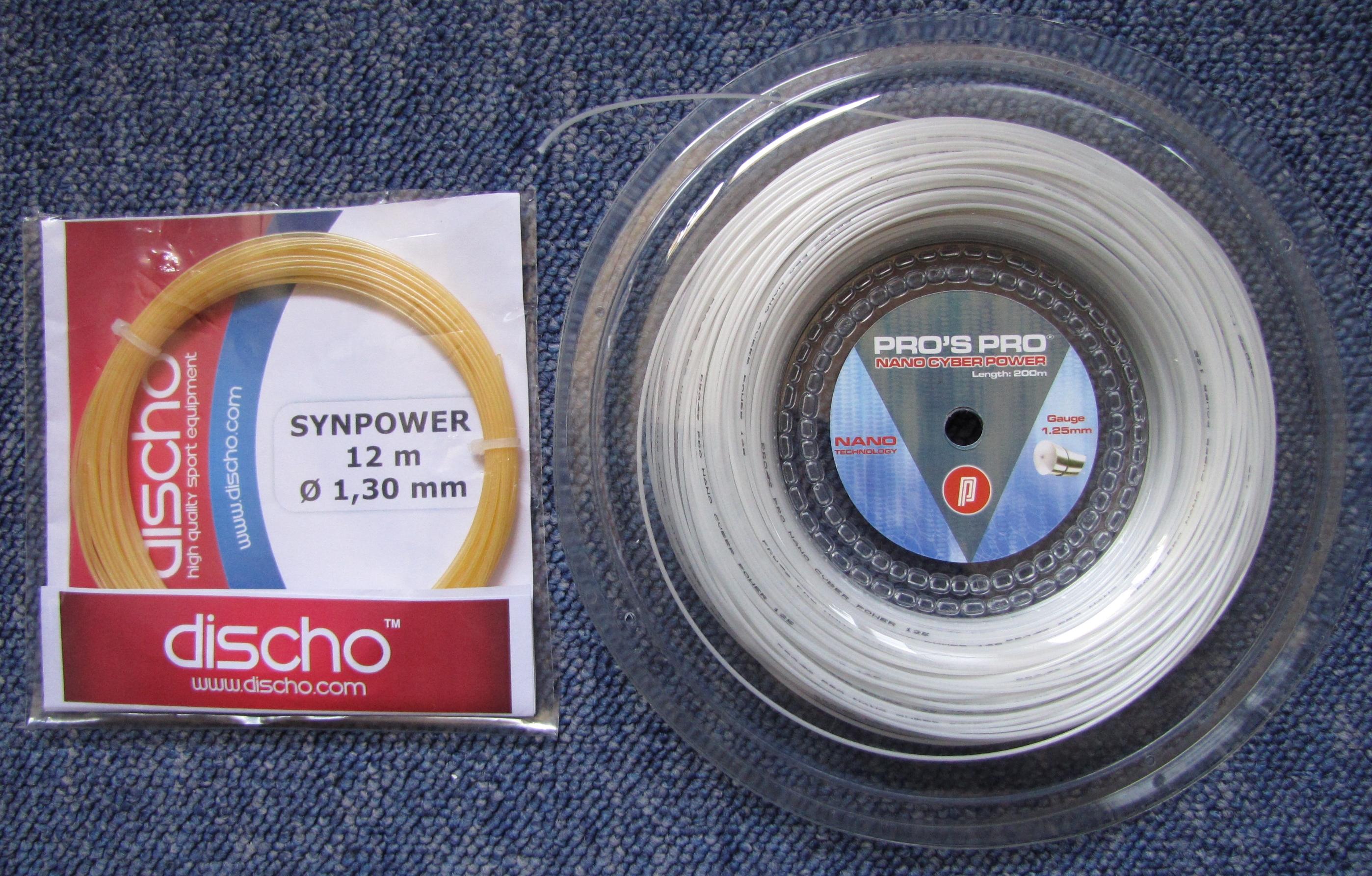We may earn money or products from the companies mentioned in this post.
Introduction

When it comes to playing tennis, the right equipment can make all the difference One often overlooked aspect is the selection of the appropriate tennis string gauge This seemingly small decision can have a significant impact on your overall performance and game style
Importance of selecting the right tennis string gauge
Choosing the right tennis string gauge is crucial because it directly affects how you play on the court The gauge refers to the thickness of the strings, and different gauges offer distinct advantages and disadvantages
1 Impact on overall performance and game style:
The choice of string gauge can influence your overall performance in several ways A thicker gauge tends to provide more durability, making it suitable for players who frequently break strings or hit with heavy topspin On the other hand, a thinner gauge offers greater feel and responsiveness, making it ideal for players who prioritize touch and precision shots
2 Influence on control, power, and spin potential:
The string gauge also plays a role in determining your level of control over the ball, power generation, and spin potential Thicker gauges generally offer more control as they provide a larger sweet spot on the racket’s strings They also generate less power but offer increased spin potential due to their ability to “bite” into the ball Thinner gauges, conversely, provide less control but allow for greater power generation due to their increased trampoline effect
Common misconceptions about tennis string gauges
Despite its importance, there are some common misconceptions surrounding tennis string gauges that need clarification:
-
“Thicker strings always last longer”:
While thicker strings may be more durable in general, other factors such as playing style, string material, and string tension can also affect the longevity of the strings -
“Thinner strings always offer more power”:
While thinner strings do provide a trampoline effect that can generate more power, it ultimately depends on the player’s technique and swing speed A player with a naturally powerful stroke may benefit more from thicker strings for better control -
“Thicker strings provide better spin”:
Spin is primarily influenced by the player’s stroke mechanics and grip rather than just the string gauge Thinner gauges may enhance spin potential due to increased ball bite, but it is not solely determined by string thickness
Understanding these misconceptions helps players make informed decisions when selecting their tennis string gauge By considering personal playing style, desired performance characteristics, and debunking common myths, players can optimize their equipment for an enhanced on-court experience
Understanding Tennis String Gauges

When it comes to tennis, choosing the right string gauge for your racket can make a significant difference in your game But what exactly is a string gauge? In simple terms, it refers to the thickness of the strings used in your racket This measurement plays a crucial role in determining the performance and characteristics of your shots
Definition and Measurement of String Gauge
The string gauge is usually measured in millimeters (mm) or US sizes The most common method is using millimeters, where the higher the number, the thicker the string For example, a 130mm string would be considered thicker than a 125mm string
In some instances, you may come across tennis strings labeled with US sizes, ranging from 15L to 17 The “L” stands for “light,” indicating a thinner gauge compared to regular strings without an “L” designation
Range of Tennis String Gauges Available in the Market
Now that we understand how string gauges are measured let’s explore the different options available:
-
Thin Strings (17-18 Gauge)
-
Medium Strings (15-16 Gauge)
-
Thick Strings (12-14 Gauge)
If you’re looking for increased power and spin potential, thin strings are worth considering These strings offer better ball pocketing and bite on contact with the ball, allowing you to generate more topspin on your shots Thin strings also provide enhanced feel and responsiveness but tend to have less durability compared to thicker options
Medium gauge strings strike a balance between power and control They offer good durability while still providing decent spin potential and feel on shots These strings are popular among players who want a versatile option that suits different playing styles
If you prioritize durability and control over power and spin, thick strings are your best bet These strings offer excellent control, allowing you to place your shots precisely They also tend to last longer due to their increased thickness However, thicker strings may sacrifice some feel and responsiveness compared to thinner options
Choosing the right string gauge ultimately depends on your playing style, preferences, and the specific characteristics you’re looking for in your shots It’s always recommended to experiment with different gauges and consult with a tennis professional or knowledgeable retailer to find the perfect match for your game
Factors to Consider When Choosing a Tennis String Gauge

Choosing the right tennis string gauge is crucial for maximizing your performance on the court It can greatly impact your playing style, personal preferences, individual skills, and physical attributes Let’s delve into these factors to help you make an informed decision
Playing Style and Personal Preferences
Your playing style and personal preferences play a significant role in determining the ideal string gauge for you Firstly, consider whether you are a baseline player or a serve-and-volley player Baseline players who rely on powerful groundstrokes may prefer thicker strings for added durability and control On the other hand, serve-and-volley players who frequently approach the net might opt for thinner strings for enhanced touch and spin
Secondly, think about your overall playing style – defensive or aggressive? Defensive players may benefit from thicker strings that offer more control and stability during long rallies Aggressive players, on the other hand, might lean towards thinner strings that provide extra power and spin to their shots
Assessment of Individual Skills and Physical Attributes
When choosing a tennis string gauge, it’s important to assess your individual skills and physical attributes Firstly, consider your level of expertise – are you a beginner, intermediate, or advanced player? Beginners often find thicker strings easier to handle as they provide more forgiveness on off-center hits Advanced players with precise ball control may prefer thinner strings for increased shot-making capabilities
Secondly, take into account your physical strength and injury history Players with greater physical strength can generate more power themselves; therefore they might lean towards thinner strings that offer additional control without sacrificing power If you have a history of arm or wrist injuries, opting for softer multifilament or natural gut strings in any gauge can help minimize the risk of further injury
Materials Used for Manufacturing the Tennis Strings
The materials used for manufacturing tennis strings can also influence your choice of gauge Synthetic strings, such as nylon or polyester, are available in a wide range of gauges and offer different playing characteristics Thicker synthetic strings tend to be more durable and provide better control, whereas thinner ones offer enhanced playability and spin potential
Natural gut strings, made from cow intestine, are known for their exceptional feel and comfort They come in standard gauges and are a popular choice among professional players However, natural gut strings tend to be more expensive and less durable compared to synthetic options
Ultimately, finding the right tennis string gauge is a personal journey that involves experimentation and discovering what works best for you Consider your playing style, individual skills, physical attributes, and the materials used in string manufacturing to make an informed decision that will enhance your performance on the court
How to Choose the Best Tennis String Gauge for You

Choosing the right tennis string gauge can significantly impact your performance on the court Different gauges offer distinct advantages and disadvantages, so it’s important to consider your playing style, skill level, and specific needs before making a decision
Advantages & Disadvantages of Different Tennis String Gauges
Thinner Strings (17-18 Gauge)
Thinner strings, with gauges ranging from 17 to 18, provide more power and feel upon contact with the ball They also offer increased spin potential, allowing you to generate better topspin or slice shots However, thinner strings tend to have less durability and may break more easily under high tension or frequent play
Medium Strings (15-16 Gauge)
If you’re looking for a balanced combination of power and control in your shots, medium strings with gauges between 15 and 16 are an excellent choice These strings offer moderate spin potential while maintaining average durability They are suitable for players who want a versatile string setup that performs well in various aspects of the game
Thicker Strings (12-14 Gauge)
If durability is your primary concern, thicker strings with gauges ranging from 12 to 14 are ideal These strings excel in providing enhanced control over your shots due to their greater stiffness However, they do sacrifice some power and spin potential compared to thinner gauges Thicker strings are commonly preferred by advanced players who prioritize precision over maximum power
Expert Tips for Selecting the Best-Suited Tennis String Gauge
-
Consider Your Skill Level, Playing Style & Specific Needs:
-
Experiment with Hybrid String Setups:
-
Seek Advice from Coaches or Experienced Players:
Your skill level, playing style, and specific needs should be the foundation of your decision-making process Beginner or intermediate players may benefit from thinner strings to improve power and feel, while advanced players might prefer thicker strings for better control
Don’t be afraid to experiment with hybrid string setups, where you use different gauges on the mains and crosses of your racquet This can help you find the perfect balance between power, control, and durability that suits your game best
If you’re still uncertain about which tennis string gauge is right for you, seek advice from coaches or experienced players They can provide valuable insights based on their own experiences and guide you towards making an informed decision
Remember, choosing the best tennis string gauge is a personal preference that depends on various factors By considering your skill level, playing style, and seeking expert advice when needed, you’ll be able to find the perfect string setup that enhances your performance and enjoyment on the court
Conclusion

Importance of finding the right tennis string gauge for optimal performance
As we have explored in this article, the choice of tennis string gauge can have a significant impact on your overall performance on the court The string gauge refers to the thickness of the strings, and it plays a vital role in determining factors such as power, control, and durability Finding the right string gauge for your playing style and preferences is crucial if you want to maximize your potential and enhance your game
When it comes to power, a thinner string gauge tends to provide more “pop” on your shots This means that you can generate greater racket head speed, resulting in increased ball speed and depth On the other hand, a thicker string gauge offers more control over your shots due to its reduced elasticity It allows you to place the ball precisely where you want it with better accuracy
Another important aspect to consider is durability Thicker gauges are typically more durable and less prone to breaking or fraying compared to thinner gauges However, they may sacrifice some feel and playability in exchange for longevity Thinner gauges offer enhanced touch and feel but may need more frequent restringing due to their lower durability
Encouragement to experiment and find the perfect fit for individual preferences and playing styles
With all these factors in mind, it’s essential not to underestimate the significance of trial and error when it comes to finding your ideal tennis string gauge Every player has unique preferences, playing styles, and skill levels that influence their needs on the court
Don’t be afraid to experiment with different string gauges during practice sessions or friendly matches By trying out various options, you will gain valuable insights into how each one affects your game—whether it’s the power, control, spin potential, or feel Remember that finding the right string gauge is a personal journey, and what may work for one player might not necessarily work for you
Seek advice from experienced players, coaches, or professional stringers who can provide valuable recommendations based on your playing style and skill level They can help guide you towards the right direction and save you time in your search for the perfect tennis string gauge
In conclusion, don’t underestimate the impact that choosing the right tennis string gauge can have on your overall performance It can significantly enhance your power, control, and overall enjoyment of the game Embrace experimentation and take advantage of expert guidance to find the perfect fit for your individual preferences and playing style Ultimately, this investment in finding the ideal tennis string gauge will pay off with improved performance on the court
Useful Links

Choosing the gauge of your tennis string
Tennis Strings | 16 vs 17 Gauge – Which Is Better?
Tennis String Options: An Overview
What are the best strings and tensions for each tennis …
Best tennis string for intermediate players
How to pratically select the best gauge of string for your …
Thin (String) Is In
Tennis String Gauge Explained
What Does Gauge Mean In Tennis Strings?
Which String and Tension is Right for You?
three questions to help find your optimal string tension
9 Best Tennis Strings | Reviewed! [Low Cost & High-End]
How To Choose Your Tennis Strings
Tennis String Guide
Guide to Tennis Strings
What Gauge Is Your Tennis String?
An Expert Guide to the Best Tennis Racquet Strings
Tennis Strings Explained
Tennis String Guide –
Strings (tennis)






